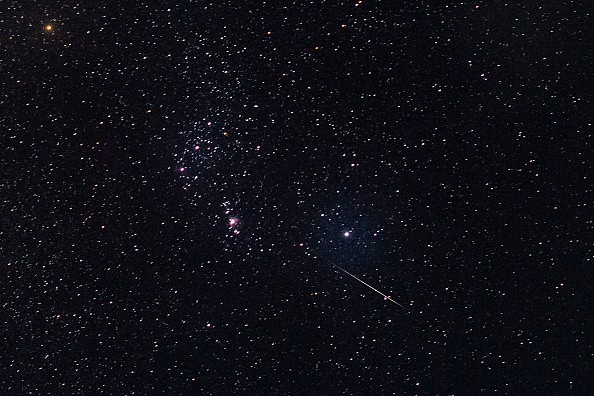Using the power of multiple space telescopes (including a retired one), scientists have confirmed the existence of what could be the farthest galaxy ever detected in human history.

Space.com reports that the galaxy, called HD1, is so far away from Earth that its light took an estimated 13.5 billion years (roughly the age of the entire observable universe) to reach us here. According to their initial calculations, HD1's distance is a full 100 million light-years farther than GN-z11, the current and what could soon be former record-holder.
Furthermore, HD1 could also be the most distant astronomical object ever found-a record which may stand unbroken for decades, maybe more.
The scientists were able to detect HD1 using several space telescopes. This includes Hawaii's Subaru Telescope, Chile's VISTA Telescope and ALMA Space Telescope, the UK's Infrared Telescope, and NASA's currently retired Spitzer Space Telescope. They observed a specific point in the sky using these telescopes for a total of 1,200 hours before they detected the galaxy.
However, the only thing they're not sure of yet is how exactly far away it is from Earth. For that, they will use the power of NASA's newly launched James Webb Telescope to further confirm their calculations. Their findings were recently published last April 7th in the Astrophysical Journal.
HD1's Distance Could Be Even Greater
Perhaps the biggest thing they observed about HD1 aside from its unimaginable distance is its age. There's a basic rule of physics applied here: the galaxy's estimated distance in light-years also means that it is almost as old (or perhaps even older) than the entire universe itself. The best estimate of the universe's age is 13.8 billion years old, according to NewScientist.

What this could mean is that HD1 isn't only the farthest astronomical object ever discovered, but also might be the oldest one. And that's not even the only amazing thing about this recent discovery.
Read Also : NASA Hubble's New Captured Image Shows 'Space Triangle'-Here's What It Is and How It Formed
If you factor in the accepted fact that the universe is expanding, the distance of HD1 from Earth could be as much as 33.4 billion light-years away, according again to NewScientist. This now puts the galaxy around a billion light-years further than GN-z11, and more than double the original estimated distance of 13.5 billion light-years.
How Were The Space Telescopes Able To See Something From So Far Away?
Two reasons: ultraviolet light, and its theoretical classification as a so-called starburst galaxy.
Scientists' observations revealed that HD1 is very bright in UV light. This is a clear indication that the galaxy hides high-energy activities within, which could also mean that it is birthing new stars at a much higher rate than our own Milky Way, as per the original Space.com report.
This is what makes it a "starburst galaxy," and even then, it's estimated to produce stars at a rate ten times greater than any other galaxy of its kind. But there's another thing about it that helped the space telescopes detect it: the presence of what could be the oldest supermassive black hole ever discovered by mankind.

What Happens Now?
As previously mentioned, the scientists will keep observing HD1 using NASA's brand-new James Webb telescope to further confirm its distance. Webb will also be used to understand why the galaxy is so bright compared to anything that has ever been found before it.

With this discovery, astronomers now have the chance to observe stars which may have formed shortly after the birth of the universe itself.
Related Article : Spitzer Space Telescope 'Sees' The Wreckage Of Two Planets That Crashed INTO EACH OTHER
This article is owned by Tech Times
Written by RJ Pierce
ⓒ 2025 TECHTIMES.com All rights reserved. Do not reproduce without permission.




